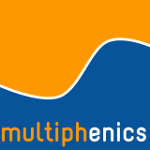multiphenicsmultiphenics - easy prototyping of multiphysics problems in FEniCS
Stars: ✭ 30 (-9.09%)
Mutual labels: multiphysics, fenics, subdomains, boundaries, interfaces
featool-multiphysicsFEATool - "Physics Simulation Made Easy" (Fully Integrated FEA, FEniCS, OpenFOAM, SU2 Solver GUI & Multi-Physics Simulation Platform)
Stars: ✭ 190 (+475.76%)
Mutual labels: multiphysics, fenics
FenicsSolvermultiphysics FEM solver based on Fenics library
Stars: ✭ 52 (+57.58%)
Mutual labels: multiphysics, fenics
RBniCSRBniCS - reduced order modelling in FEniCS
Stars: ✭ 5 (-84.85%)
Mutual labels: fenics
cashocscomputational adjoint-based shape optimization and optimal control software for python
Stars: ✭ 18 (-45.45%)
Mutual labels: fenics
grinsMultiphysics Finite Element package built on libMesh
Stars: ✭ 45 (+36.36%)
Mutual labels: multiphysics
tugareconPentest: Subdomains enumeration tool for penetration testers.
Stars: ✭ 142 (+330.3%)
Mutual labels: subdomains
SubfinderSubfinder is a subdomain discovery tool that discovers valid subdomains for websites. Designed as a passive framework to be useful for bug bounties and safe for penetration testing.
Stars: ✭ 4,509 (+13563.64%)
Mutual labels: subdomains
femNotes on finite element method
Stars: ✭ 20 (-39.39%)
Mutual labels: fenics
tutorialsVarious tutorial cases for the coupling library preCICE with real solvers. These files are meant to be rendered on precice.org, so don't look at the README files here.
Stars: ✭ 72 (+118.18%)
Mutual labels: multiphysics
fiatFIAT: FInite element Automatic Tabulator
Stars: ✭ 33 (+0%)
Mutual labels: fenics
fenics-adapterpreCICE-adapter for the open source computing platform FEniCS
Stars: ✭ 22 (-33.33%)
Mutual labels: fenics
fenics-DRLRepository from the paper https://arxiv.org/abs/1908.04127, to train Deep Reinforcement Learning in Fluid Mechanics Setup.
Stars: ✭ 40 (+21.21%)
Mutual labels: fenics
GridapGeosciences.jlGridap drivers for geoscience applications
Stars: ✭ 28 (-15.15%)
Mutual labels: multiphysics
uflUFL - Unified Form Language
Stars: ✭ 51 (+54.55%)
Mutual labels: fenics
Recon-XAdvanced Reconnaissance tool to enumerate attacking surface of the target.
Stars: ✭ 27 (-18.18%)
Mutual labels: subdomains
pymorpyMOR - Model Order Reduction with Python
Stars: ✭ 198 (+500%)
Mutual labels: fenics
AsFemA Simple Finite Element Method program (AsFem)
Stars: ✭ 108 (+227.27%)
Mutual labels: multiphysics
implements🐍 Pythonic interfaces using decorators
Stars: ✭ 30 (-9.09%)
Mutual labels: interfaces
dolfinx-tutorialA reimplementation of the Springer book: https://github.com/hplgit/fenics-tutorial/, covering new topics as well as transitioning from dolfin to dolfinx
Stars: ✭ 28 (-15.15%)
Mutual labels: fenics

